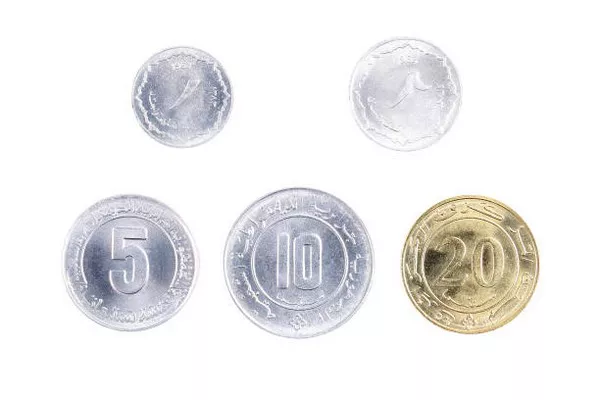In the realm of global finance, understanding the currency of a nation is fundamental to comprehending its economic landscape. Algeria, a North African country with a rich history and diverse cultural heritage, is no exception. The official currency of Algeria is the Algerian Dinar (DZD), a symbol of the nation’s economic stability and financial identity. In this article, we will delve into the history, features, and significance of the Algerian Dinar.
Historical Background
The history of the Algerian Dinar can be traced back to Algeria’s struggle for independence from French colonial rule. Prior to gaining independence in 1962, Algeria used the French Franc as its official currency. However, with the establishment of the Algerian Republic, the need for a distinct national currency became apparent.
In 1964, the Algerian government introduced the Algerian Dinar as the official currency, replacing the French Franc. The Dinar was pegged to the French Franc initially but later transitioned to a floating exchange rate system, allowing its value to be determined by market forces.
Design and Denominations
The Algerian Dinar is issued by the Central Bank of Algeria, which oversees the country’s monetary policy. The bank has introduced various banknotes and coins, each featuring elements that reflect Algeria’s history, culture, and natural resources.
Banknotes are commonly denominated in values of 100, 200, 500, 1000, and 2000 Dinar, with each denomination featuring prominent figures, landmarks, or symbols relevant to Algeria. The designs showcase the nation’s commitment to preserving its cultural identity while embracing modernity.
Coins, on the other hand, come in values of 1, 2, 5, 10, 20, 50, and 100 Dinar. These coins feature different motifs, including historical monuments, traditional symbols, and images representing Algeria’s rich diversity.
The Features of the Algerian Dinar
Security Features
In line with global standards, the Algerian Dinar incorporates advanced security features to prevent counterfeiting. These features include holographic strips, watermarks, and microprinting, making it difficult for counterfeiters to replicate the currency. The Central Bank of Algeria regularly updates these security measures to stay ahead of evolving counterfeiting techniques.
Cultural Representation
The designs on the banknotes and coins of the Algerian Dinar showcase the nation’s cultural and historical heritage. For instance, the 100 Dinar banknote features the image of Abdelhamid Ibn Badis, a prominent figure in Algeria’s struggle for independence and a key contributor to the country’s cultural and educational development. Such representations on the currency help reinforce a sense of national pride and identity.
Economic Significance
The Algerian Dinar plays a crucial role in the country’s economic stability and growth. As the official medium of exchange, it facilitates domestic and international trade, investments, and financial transactions. The stability of the Dinar is closely monitored by the Central Bank of Algeria to ensure price stability and economic development.
Exchange Rate Policy
Algeria has adopted a managed float exchange rate system for the Algerian Dinar. This means that while the exchange rate is influenced by market forces, the government and the central bank may intervene to stabilize the currency if necessary. This policy provides a degree of flexibility to adapt to changing economic conditions while preventing excessive volatility in the exchange rate.
Challenges and Future Prospects
Despite its historical and cultural significance, the Algerian Dinar has faced challenges in recent years. The country’s economy is heavily dependent on oil and gas exports, making it vulnerable to fluctuations in global commodity prices. Economic diversification efforts are underway to reduce this dependence and enhance the overall resilience of the Algerian economy.
Additionally, factors such as inflation and political instability can impact the value of the Dinar. The government and the central bank are actively addressing these challenges through prudent fiscal and monetary policies to ensure the stability of the currency.
Looking ahead, Algeria aims to strengthen its economic foundations, promote sustainable development, and enhance its global competitiveness. The Algerian Dinar will continue to play a pivotal role in these efforts, serving as a symbol of the nation’s resilience and commitment to progress.
See Also:What Is The Best Currency To Take To Algeria?
Conclusion
In conclusion, the Algerian Dinar is more than just a unit of currency; it is a symbol of Algeria’s journey from colonial rule to independence and its ongoing efforts towards economic development. The currency’s design, security features, and economic policies reflect the nation’s cultural richness and commitment to stability. As Algeria navigates the challenges of the modern world, the Algerian Dinar remains a tangible representation of the country’s identity and aspirations.


